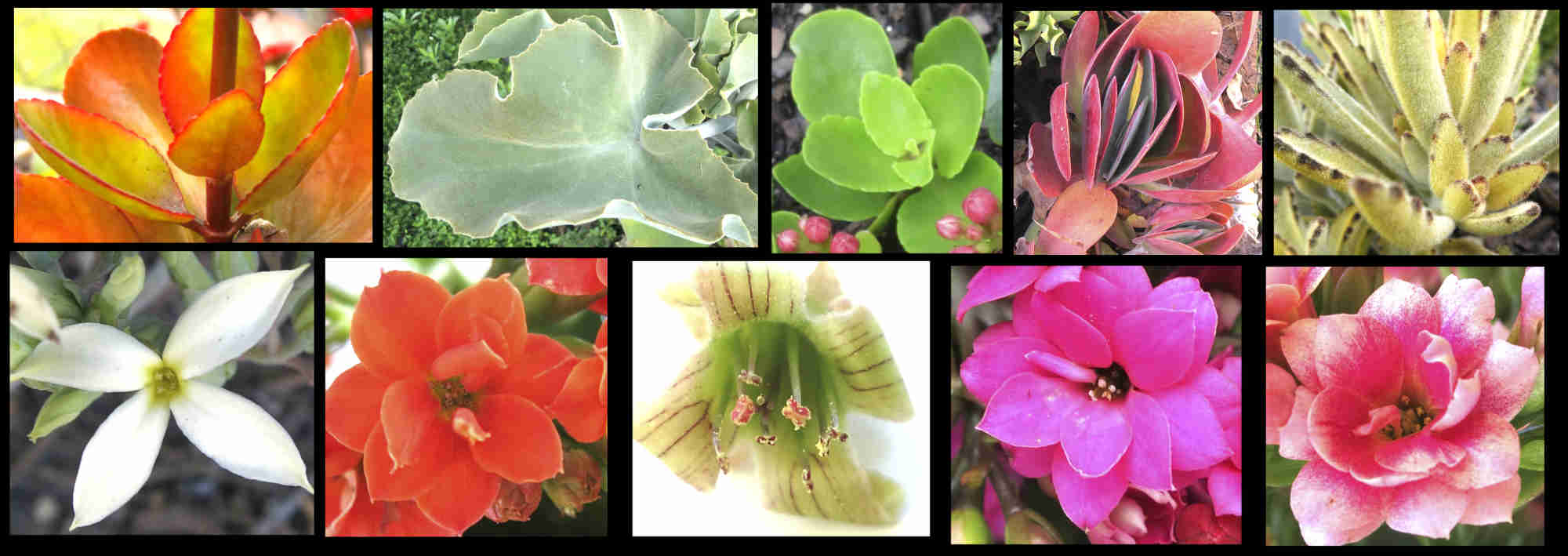Kalanchoe.
Family Crassulaceae > Subfamily Kalanchoideae > Genus Kalanchoe > Subgenera Bryophyllum, Kalanchoe and Kitchingia.
(Bryophyllum is officially a synonym for Kalanchoe but, for reasons noted under that section I have treated it as a separate genus.)
Plants of the World Online (Kew) recognise 173 Kalanchoe species that are mainly from Madagascar and Africa.
Most are succulent perennial herbs under 1 m high with some shrubs up to 6 m (K. beharensis).
Leaves are mostly opposite and decussate (in 4 ranks) but some are alternate or appear to be in a whorl and there may be a basal rosette.
There may be dense hairs on many parts.
They fleshy leaves can be simple, deeply lobed, trifoliate or rarely pinnate.
There may be a petiole or none with the bases meeting around the stem.
Upper leaves, with or without a petiole become small and bract-like.
Many have bulbils on the leaf edges.
Terminal inflorescences are loose or dense branched clusters of flowers.
The often pendulous flowers are on a pedicel.
The sepals are almost always joined at the base with 4 (3, 5) lobes.
The tube can be bell or urn-shaped, cylindrical or inflated (spherical) at the base.
Shorter than the corolla it is green sometimes with reddish-purple lines.
The lower two-thirds of the petals are fused into a cylindrical or urn-shaped tube that may be swollen at the base.
The straight or curved 4 angled tube has 4 short spreading lobes that may curl back.
The 8 stamens, in 2 whorls are inserted onto the base or lower half of the corolla tube.
The anthers usually lie in the throat or just past it.
There are 4 variously shaped nectaries.
The ovary has 4 carpels that are free or joined at the base.
Each has numerous ovules.
The styles usually hold the stigmas past the corolla tube.
Each carpel develops into a follicle with oblong seeds with a wrinkled surface.
J.F.


